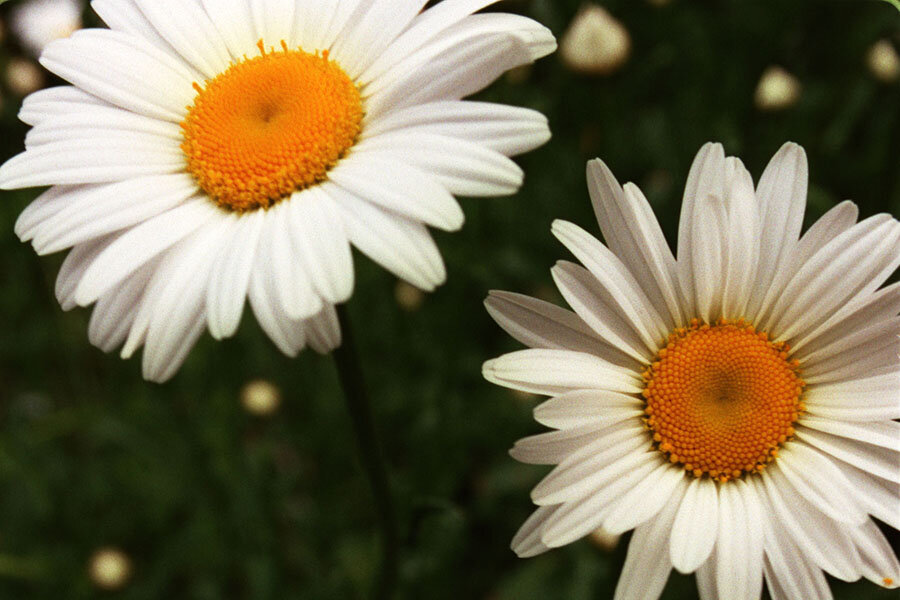Are Fukushima's mutant daisies a wonder or a warning?
Loading...
Should you be more worried about environmental toxins when your garden’s daisies look like they’ve been run through a trippy Dreamscope inceptionist image filter, or if your tulip trees have stippled leaves?
Residents of Japan's Nasushiobara City have been posting images of the deformed daisies that some believe may be linked to the 2011 meltdown of the Fukushima nuclear power plant.
Trees and flowers can act as Mother Nature’s version of a canary in a coal mine, an alarm system giving off warnings – ia size, shape, color, splitting, or stacking – that toxins are present in our immediate environment.
Or they could just have a hormone imbalance, says Todd Forrest, the New York Botanical Garden’s vice president for horticulture, says in an interview. The fairly common deformities showing up near Fukushima could easily have been caused by a random mutation, insects, diseases, or even physical injury to the plant, he says.
In other words, doubled flower heads are no reason to call the Environmental Protection Agency (EPA), according to Mr. Forrest.
"Fasciation is a relatively common occurrence in the garden world," he says. Fasciation is the technical term for banding or bundling, and can result in a flower stem that looks flattened, splayed, or fused – ranging from the grotesque to the sublimely interesting.
"Radiation being present in the environment is a plausible explanation," says Forrest, "but not necessarily the only explanation for the phenomenon."
Many of the daisy images are coming from& Fukushima Diary, a popular site on Pinterest showing images of doubled daisies, roses and sunflowers.
Members from other nations have posted similar floral mutations on Fukushima Diary, not as evidence of radiation but as a wonder they revel in.
Forrest says these alterations in plants and trees can be caused by many different stressors, including radiation, environmental toxins, global warming, introduced garden pests like mountain pine beetle, and invasive plants like kudzu.
"Plants growing in one's garden are going to respond to the environment around them," says Forrest, "and environmental change ... can be local, regional, or even global."
He adds, "There’s no question that we see pollution’s effects in the garden." He points to ozone and sulfur dioxide as particular problems in New York, where he lives.
Joe Cook, chair of the local Sierra Club in Norfolk, Va., recently called for testing of community and private gardens for coal dust and heavy metal pollutants allegedly coming from the Norfolk Southern Railroad’s coal piers.
"We believe that people’s gardens may be very telling. We look to plants to see effects before we see them in people," Mr. Cook told the Monitor.
Trees may actually show effects of environmental toxins more effectively than flowers, says Forrest.
"I look at trees because they grow over the long term, and you can see changes from year to year," he explains. "An annual crop might come up funny but then you grow it again the next year and you don’t have that problem."
At the New York Botanical Garden, he says, "We have more than a million plants in our collection and see unusual or unexpected things all the time.... But we see the results of sulfur dioxide and ozone particularly on our old conifers, which are quite sensitive, and even on tulip trees and other deciduous species that show stippling on the leaves."
Concentrated pollutants will "definitely" affect household gardens, he says, and gardeners are uniquely positioned to spot subtle changes.
"Most people are not really aware of the plants that grow around them," says Forrest. "Gardeners are acutely aware of their plants and can often see these changes before non-gardeners."






